︎ INTERVIEW: NICOLAS BRUNO
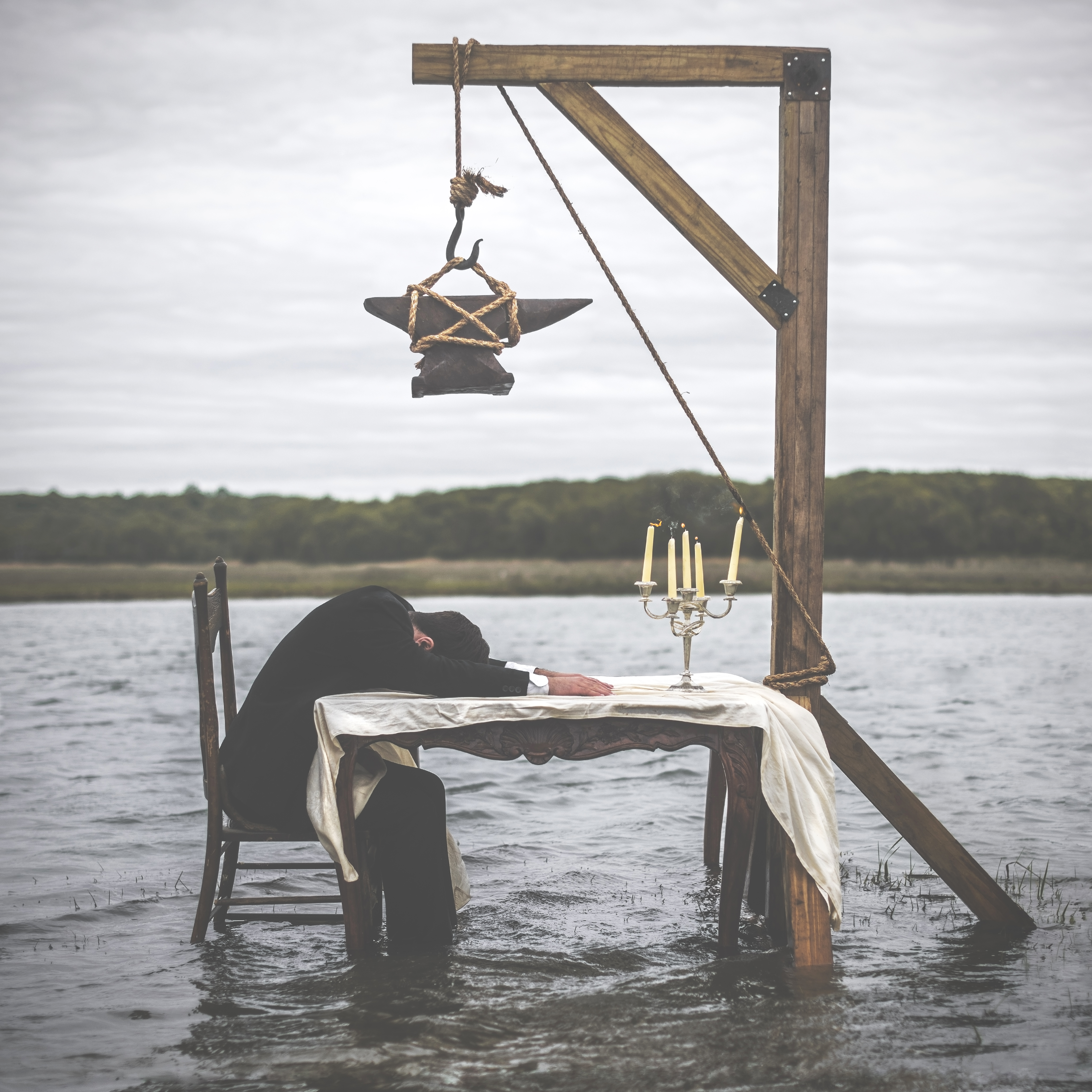
What’s the most nerve-racking experience you’ve faced? Just think for a minute... Now imagine that exact distressing, unsettling feeling prolonged for hours on end in your sleep. Just sounds like a nightmare, right? But most people are able to wake up from their nightmares. Now imagine this exact ‘nightmare’ but with your body completely paralysed, whilst consciously knowing you’re awake and unable to wake up or call for help in this horrific simulation. Trapped.
This is sleep paralysis - a condition photographer Nicolas Bruno has experienced since childhood. Now, ostensibly, the 24-year-old is combating and reflecting this condition day-by-day through photography. As you can imagine, the end product is pretty haunting. His latest series showcases the deepest, darkest depths his mind conjures under sleep paralysis. Often set centuries in the past, Bruno encapsulates the relentless nature of the condition through drab environments, wooden props and anonymous figures with white bags covering their faces, secured claustrophobically with a thick rope.

Let’s start with the basics - could you give me some background information on yourself i.e. age, where/what it was like growing up, where you’re living now, how you got into photography.
I’m a conceptual artist with a studio practice based in Long Island. I was born in 1993 and live in Northport, New York, where most of my photographs are created. I graduated from Purchase College with a BFA in Photography and Minor in Art History. I grew up exploring the surrounding woods, marshlands, and abandoned spaces within my area. These areas became a refuge and catalyst for my growing imagination. I often return to these places and use them as the setting for many of my works.
Aside from the fact your work reflects/is inspired by your sleep paralysis, who are you influenced by in your photography?
I am constantly searching for inspiration in alternative mediums such as painting, sculpture, writing, and music. I am particularly drawn to the world of nineteenth century painting, where many boundaries in art were broken and interesting niches began. Compositions by artists like Caspar David Friedrich and John Atkinson Grimshaw offer a unique approach to rendering color and dark subject matter. By studying the approach of a classical painter, I am able to emulate their techniques and process through photography.
Can you describe your creative process whilst making your latest series? How are you able to create such an emotive image?
I begin my process by logging my sleep paralysis experiences into my dream journal through sketching and documentation. Each recorded dream serves as the basis for one or multiple concepts. I will make a finalized sketch of the dream, which involves incorporating visual symbolism, defining characters, and a list of what I will need to make for the concept. My props and costumes are either made by me from upcycled materials, or repurposed from scrap yards, thrift stores, and side of the road. Once I have gathered my props, I will scout locations for the concept and take snapshots to review later that evening. Once the location is locked in, I will set out to the location with everything crammed into my Jeep. I will unload, drag everything into the woods or marshland, and begin setting up my scene. My camera is set up on a tripod and continuously shoots on an interval timer, which allows me to freely model for one or multiple characters. I will move my props around the scene, use smoke bombs to paint a haze, and interact with the surrounding environment to create change. Once I have shot the concept, I will use an expansion technique by taking exposures with my camera facing up, down, left, and right of the original spot to later be stitched together.
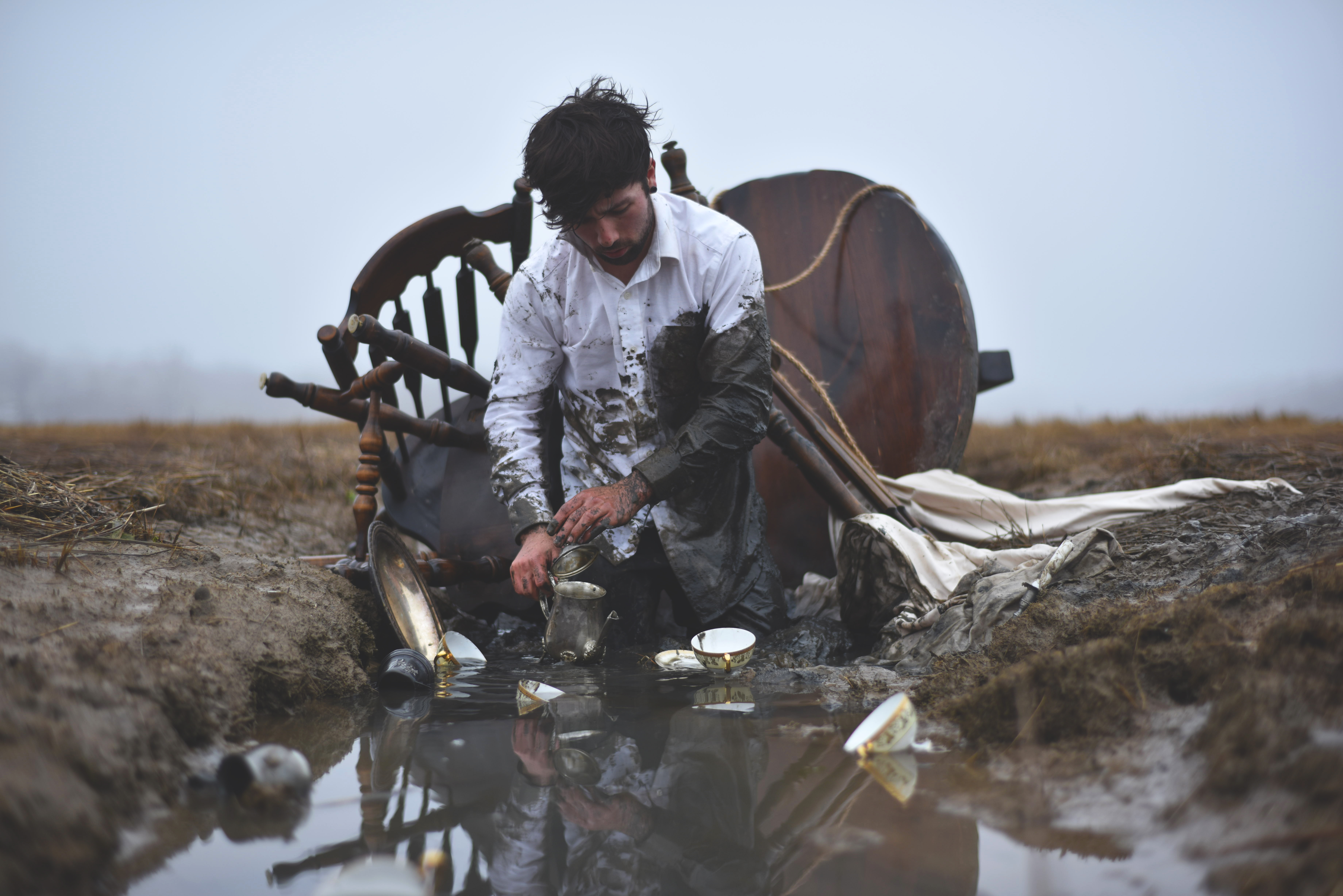
How long does it typically take you to complete a shoot/series?
Depending on the concept, the creation of an image may take from two days to a month. Different factors influence how quickly I can create my idea, ranging from budget restrictions, weather changes and ocean tides. I am always working on multiple concepts at a time, so there is always something to shoot in the interim. Once I am set up at my shoot location, a photo session can be as quick as a half hour, or up to four hours if I am waiting for the right clouds, rain, or tide. The next day will be devoted to my editing process, which also reflects the same time structure. I plan my shoots to involve as little editing as possible.
What’s the most memorable experience you’ve had with sleep paralysis? Could you describe that feeling?
My first experience with the "Old Hag" figure truly stands out as the most physically and emotionally draining experience that I've ever had. Upon waking into the paralysis, I felt a presence in the room which sent me into panic. In my peripheral vision, I spotted a figure of a woman in a dress that loomed in the corner of the room by the doorway. This realization sent my mind racing with fear. Immediately, I attempted to scream and break out of the paralysis, but as I took action, I was instantly grappled by a plethora of shadow hands that protruded from under my covers, bracing me to the bed. My attempt at escaping caused the woman to shriek with eardrum bursting static. She began her journey towards my bedside by hovering ominously across the room. I felt a suffocating pressure building as she moved towards me. After what seemed like a half hour of fighting with the woman's tormenting scream and energy, I broke free from the paralysis and escaped to the lower level of my house. Little did I know, I was still dreaming. The dream lapsed into a second sleep paralysis episode that repeated with more intensity and horrific sensation.
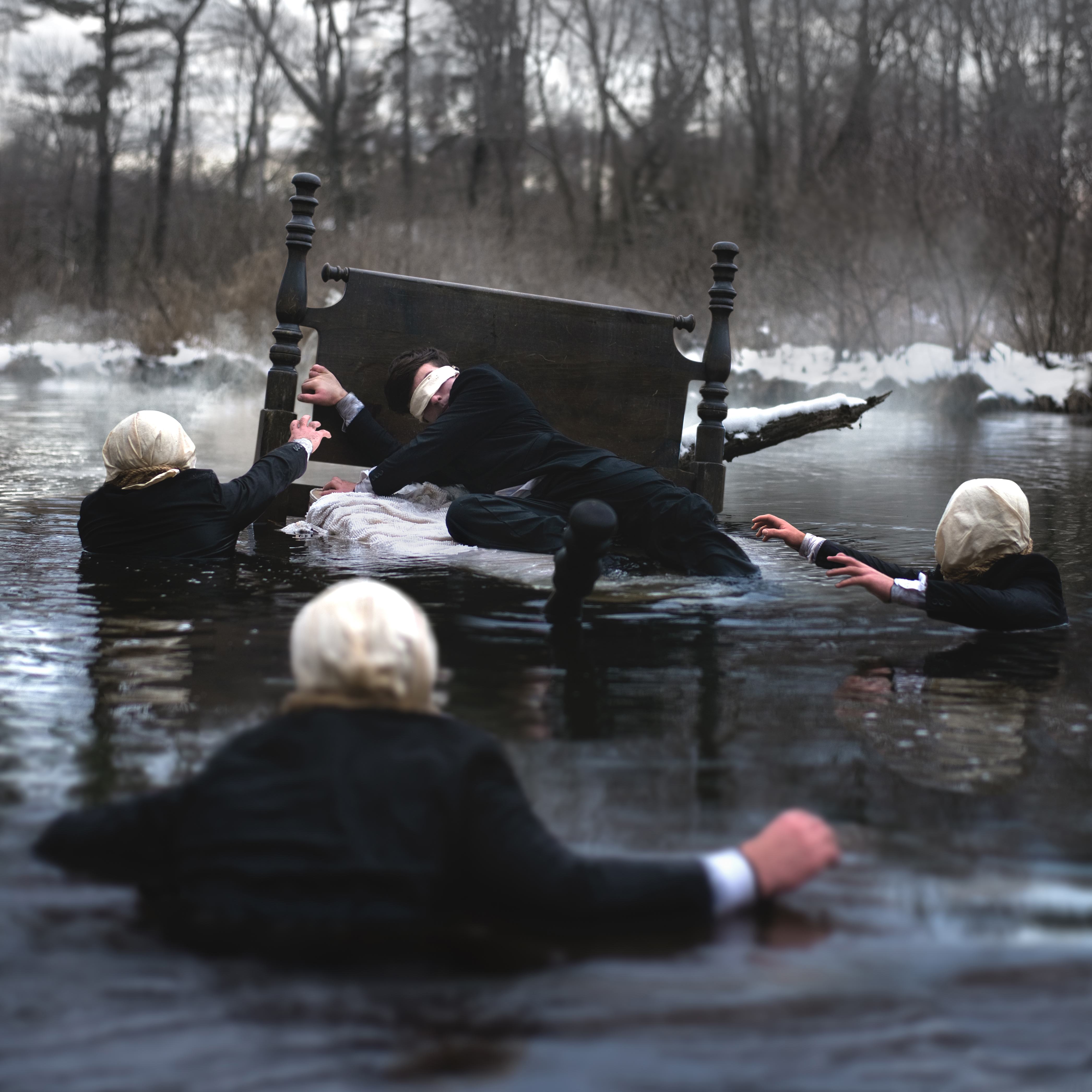
I read that you’ve experienced sleep paralysis since the age of 14/15. How have you been able to cope with the condition? Is there any advice you could give to people suffering the same problem?
Transforming my terrifying experiences into works of art has helped me rationalize my condition and connect with other sufferers around the world. By turning my dreams into something tangible, I achieve a comfort in knowing that I have a way to communicate something that is almost impossible to describe. For other sufferers, I recommend keeping a dream journal to log your experiences. Looking back on your journal, you may find therapy in sharing your dreams through a positive outlet, such as art, music, writing, or even dance. Aside from art therapy, I have found that avoiding sleeping on my back will diminish the intensity of the physical stress within the dreams. The heavy pressure on my chest or drowning feeling directly pairs with sleeping on my back. I have also found that by avoiding back sleeping, you end up barring your field of vision, which will subdue the visual effects of the dreams. You have a full visual span of the room while sleeping on your back, and by taking this element away, it will take away the terrifying situations that happen in the room. I also sleep with a white noise or fan next to my bed in order to quell the auditory hallucinations of screaming and other voices. My subconscious will focus on this noise and will generally not generate any screams or static.
Elements such as water and fire are common themes throughout your work. What draws you to these elements?
I use water and fire to communicate different aspects of my sleep paralysis experiences. Water serves as a visual metaphor for the realm of sleep, where consciousness represented by what is above the surface. My characters are often submerged or emerging from the depths, lingering between the two realms in the purgatory that is sleep paralysis. The symbol of water also portrays the drowning and choking feeling one may experience during a sleep paralysis episode. The flames and embers within my compositions directly relate to the explosion of anxiety that is experienced when waking up in paralysis.
You use props frequently within your work. Do you believe that without the use of props, you would not be able to portray the same emotion and atmosphere to the viewer?
The props I use are a major storytelling component within my creations. They are also an extension of my artistic expression. I have created concepts that lack props which remain powerful on their own, but I feel more comfortable conveying an idea through the geometry and materials of symbolism. I can certainly create prop-less pieces with the same integrity, but I find that having my hand in multiple mediums adds another level of intrigue to my process.
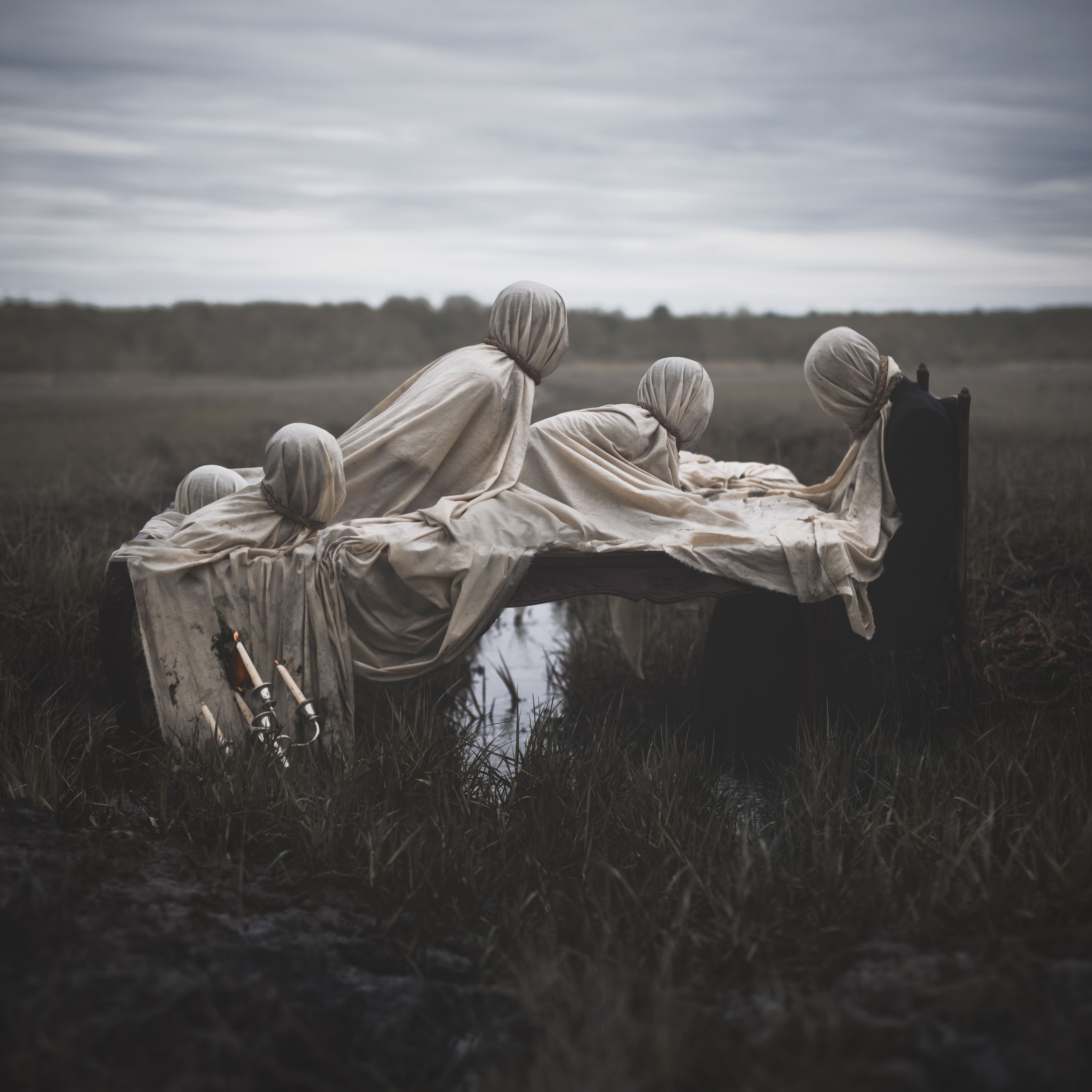
Your work seems to take us as the viewer to a different time period. What is it that makes you want to step into a past decade or century?
My artistic influences and academic exploration of the past directly inform the blended periods of time that I assign to my imagery. Aside from my studies, I never found true interest in the modern world for inspiration. I’m still waiting for the invention of the time machine.
How important do you feel post-processing of photographs is to you?
Post processing allows me to create my works on my limited budget. Although Photoshop is limitless, I have created a set of rules that I must follow to ensure I do not cross into the world of heavy manipulation and digital art. Everything that I shoot has to happen in front of the camera at that exact moment, and images from past shoots cannot be stitched into my works in progress. If my camera shifts during the shoot, I will have to restart or reshoot the image. These limitations create a guideline for a seamless image that maintains all of the integrity of a single photograph.
What is the most important aspect in creating a photograph to you personally?
Being able to communicate an emotion or concept through flawless execution is something I strive to do better every time I pick up my camera. Through my experiences and visuals, I want to move my viewers by awakening thoughts and recollections from their own dreams and subconscious.
Have you considered doing photography projects outside of the sleep paralysis orientated themes? If so what have you worked on?
I am constantly working on side projects, both commercial and personal, which all fall into multiple mediums. One of my recent side projects is working as the art director and photographer for Fell & Fair productions, a group of storytellers that explore themes of adventure and warfare across history. I create and photograph scenes involving folklore, armored knights, and hooded brigands in the mountains.
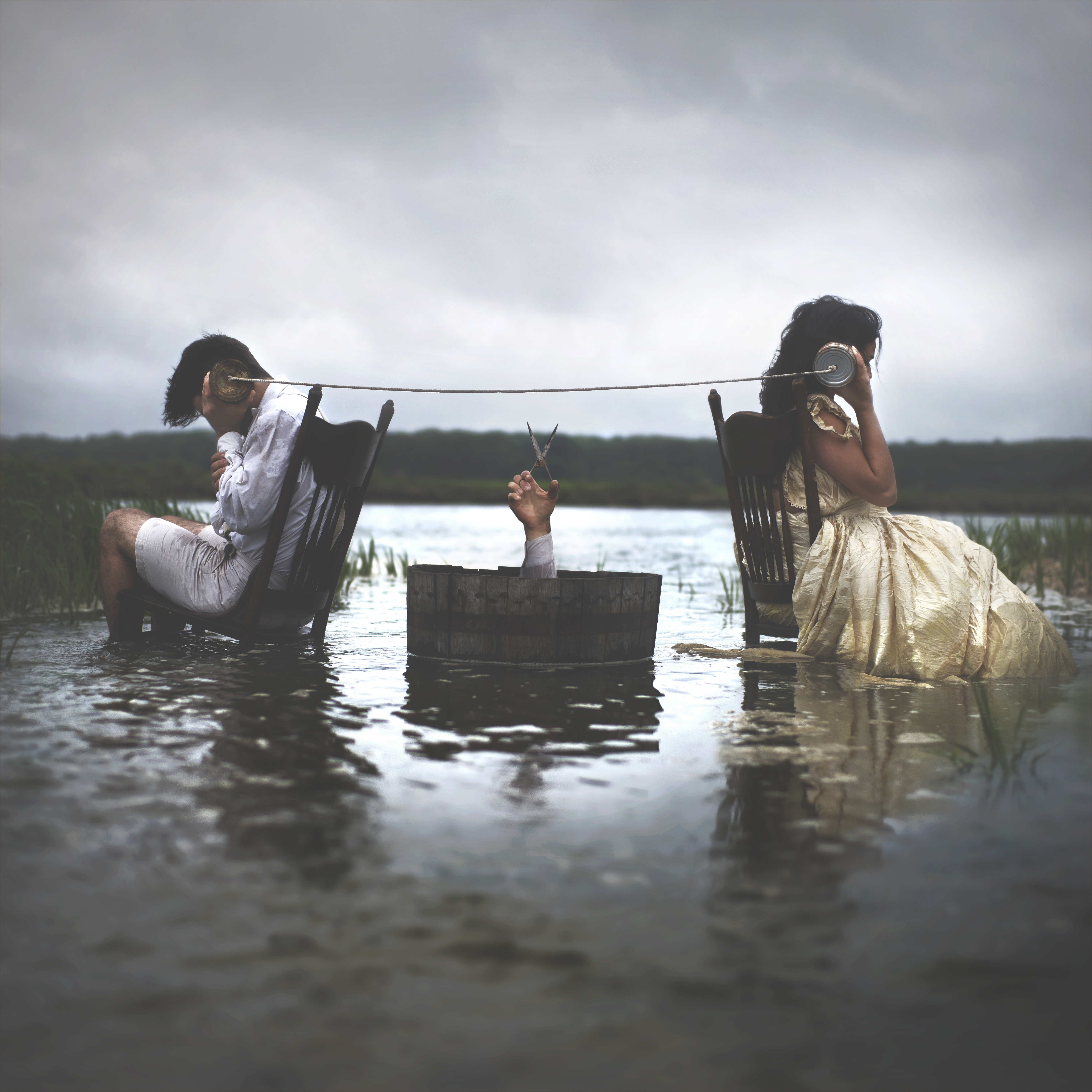
What do you think of the resurrection of film photography? Do you prefer film or digital?
I am thankful that film has held its ground and will continue to be pioneered in the photography world. I’ve had the pleasure of shooting a large format view camera for a short period of time, and I have never experienced such incredible resolution in any other format of photography. I prefer digital due to the quick nature and its budget friendly nature, but if I had the choice, I would immediately switch to a large format camera with color film.
What camera do you use to take these images? How do you take them?
I recently started shooting with a Nikon D810 and Nikon 50mm 1.4 lens, previously a Nikon D600. I rarely use anything other than my 50mm lens. I keep my F-stop between 1.8-2.2 to create a shallow depth of field and give my subject some breathing room from busy backgrounds. This choice also allows my smoke bombs to mask out any business in the horizon. My subjects are normally around twelve feet away from my camera. I prefer to shoot in areas with vast clearings and uniform light. I wait for overcast or rain to give me a flat color pallet to work with in my post processing. This decision allows me to avoid harsh highlights and bring out the true tones of the materials in textures within an environment.
How important are social media platforms to you as a photographer today?
Social media is paramount for independent artists like myself that are trying to share their work with the world. These platforms allow us to be our own agent, express ourselves freely, and create connections with some of the most prestigious companies in the world of art at the click of a button. I do not know where my career would be if I wasn’t able to share my visions through the world of social media.
Could you give us some insight into the next project you’ve been working on? You’ve got an exhibition coming up February 2019 haven’t you?
My exhibition on February 23rd at Haven Gallery, NY will showcase an extension of my sleep paralysis series, and hopefully feature the VR project that I’ve continuously been working on. I am still trying to secure funding for the creation of the master program that can be distributed. If I can fund it in time, I will unveil this project at the exhibition.
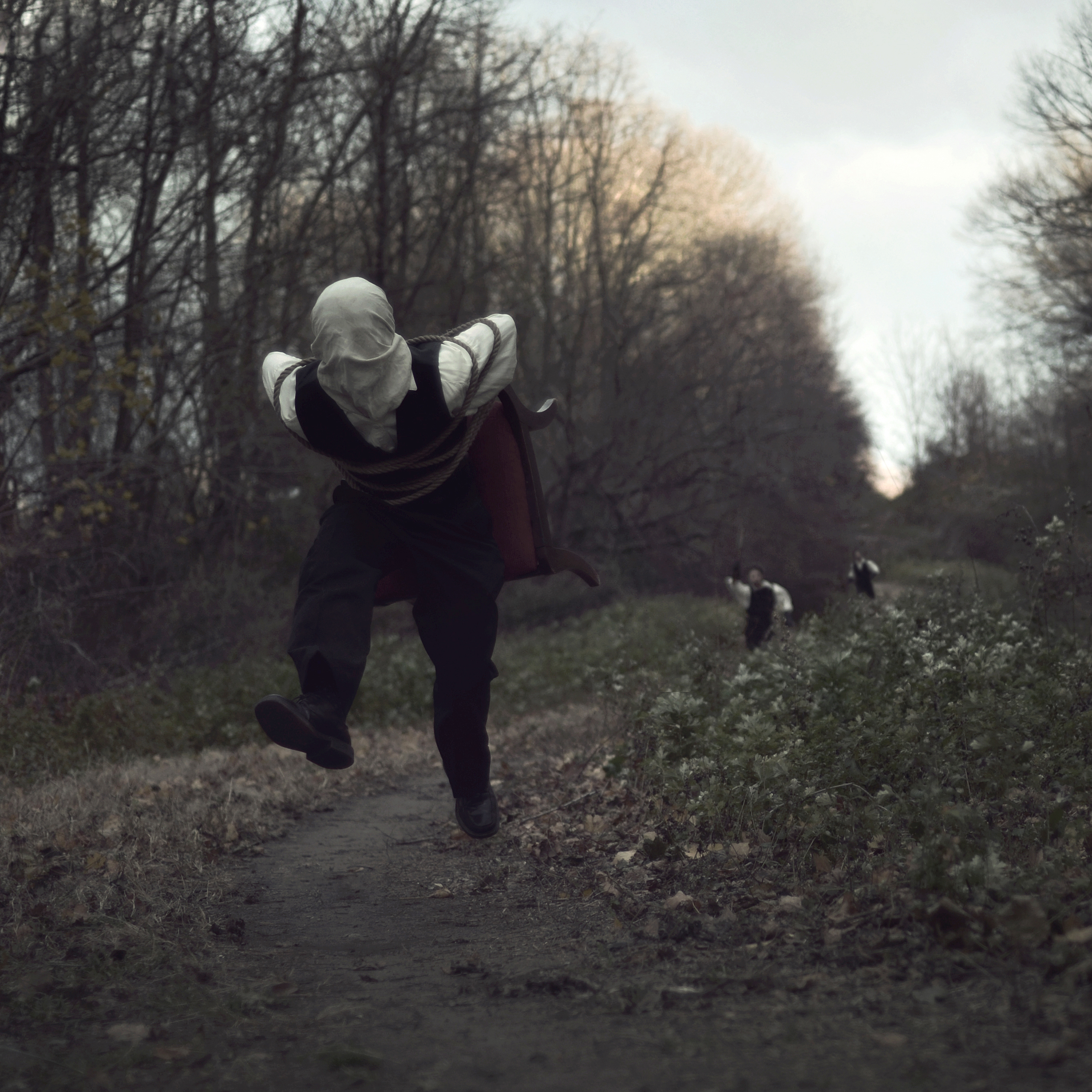 On Instagram you announced that you now have your own art studio. How will this affect your daily practice? What are your intentions with the space? And will it open up new opportunities for you?
On Instagram you announced that you now have your own art studio. How will this affect your daily practice? What are your intentions with the space? And will it open up new opportunities for you? My studio has given me an unrestricted ability to create what I previously couldn’t imagine. I used to build my props and costumes in a crammed single car garage at my grandma’s house, which was not entirely the best, but it gave me a place to work. I’ve worked diligently over the years to acquire a studio, and now my creative process is streamlined. The space allows me to hone my craft, develop new ideas, and even provide instruction for local students. My mind also feels a lot better knowing that I have a place to escape the world and create what I love.
What advice would you give to creatives aspiring to make a career in the creative industries?
Do not let the price of your gear hold you back from creating amazing images. It isn’t necessary to have the fanciest camera to create visually stunning work. If you are fortunate to have a camera, you should take the time to learn every function that it offers and define its limitations. Once these limitations are defined, exploit them to your benefit or use them as a guideline. With your tools and limitations, produce what you love without hesitation. Share it with everyone and anyone. Be your own agent and network constantly.
Who are some up and coming photographers we should be looking out for?
Some upcoming artist that I enjoy are Sean Mundy, Gabriel Guerrero Carcoa, Leafy Yeh, and Irina Dhzul.
What are your goals for the future?
A goal of mine is to travel across the US and create the sleep paralysis experiences of other sufferers. I am working on developing a campaign that will allow individuals to submit their stories and have them recreated as a therapeutic process. I hope to expand my exhibition history and develop new stunning works for the world to enjoy.
What is your definition of creativity?
To me, creativity is the ability to weave together ideas that universally connect with those who dare to see differently.
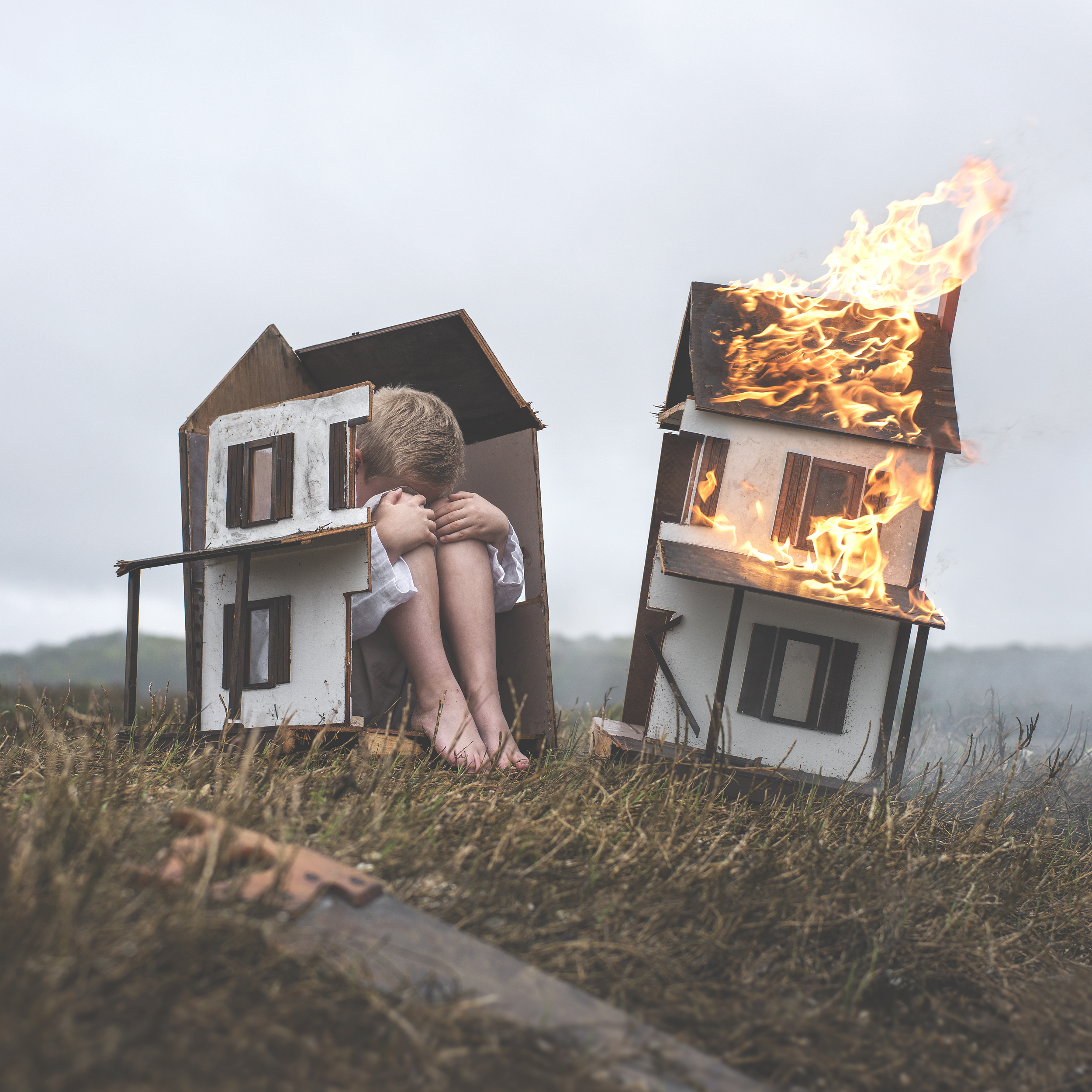
Interviewed & written by BENJI REEVES
Shot by NICOLAS BRUNO
